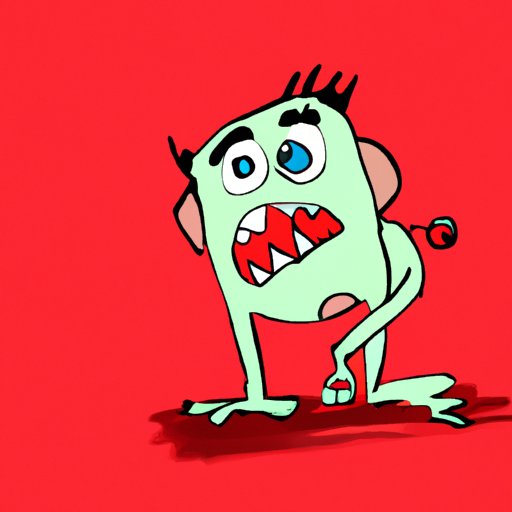
Introduction
Drawing monsters can be a fun and challenging task for artists of all skill levels. While monsters may seem like creatures from imaginary worlds, they have some characteristics that resemble real-life living things. To create a realistic and creative monster, it’s essential to follow some tips and techniques, which we will explore in detail in this article.
Step-by-Step Guide
Before starting the actual drawing, it’s crucial to sketch out some basic shapes and sizes, which will serve as the foundation for building the monster. The following are some steps to follow.
Step 1: Sketch basic shape
Sketch out the basic shape of the monster’s body and limbs. This step will help you determine the foundation of your drawing, and it doesn’t have to be elaborate. A simple stick figure-like shape can guide the initial sketch.
Step 2: Add details
Add details one by one to the basic shape, such as facial features, claws, or scales. Keep in mind that a monster can have various body parts inspired by other animals and not necessarily be humanoid.
Step 3: Refine Proportions and Symmetry
Pay attention to the monster’s proportions and symmetry. This step not only adds to the visual appeal of the monster but can also make it appear stronger and more realistic. Keep both sides equal to highlight the monster’s balance.
Step 4: Outline and Color the Monster
The final sketch is complete, and now it’s time to bring the monster to life. With a pen, darken the sketch lines to create crisp outlines. Depending on the final approach, add colors such as gradients, bold colors, or realistic hues.
Drawing Techniques
Drawing monsters is more fun when there is a diversity of techniques to add texture and depth to the artwork. Here are few essential techniques to consider:
Shading
Shading is the practice of adding darker tones to areas of an illustration to create the illusion of depth. It helps to bring a 3D aspect to the monster
Color Blending
Blending color is the process of creating a smooth or gradual transition from one color to another. This technique can be used to make the monster appear more dynamic and appealing.
Line Weight
Line weight or thickness of the lines, can be used to create contrast and more emphasis. This technique can also make the monster stand out and look more dramatic.
Downloadable Templates
For those just starting with monster drawings or anyone looking for some inspiration, you can download pre-made templates. This can save time and provide a solid foundation for monster anatomy. Look for one or multiple templates that fit your monster drawing idea and start working creativity around it.
Giving the Monster Personality
Monsters can be scary or friendly depending on their facial expressions, as any other living creature. The following is a guide on how to give your monster personality:
Playing Around With the Eyes
The eyes reflect the monster’s emotions and can be shaped and tilted to convey different moods. Experiment with expressions by making the monster look angry, happy, sad, or startled.
Playing With Mouth Expressions
Similar to eyes, the shape, and size of the mouth can make the monster appear friendlier or more menacing. Playing with the position of the mouth can make the monster smile or frown
Sketching and Creating Iterations
Creating multiple iterations helps to refine the monster’s shape, size, and details. Sketching can also prevent errors in the final version and provide an opportunity to experiment with different ideas. Take time to explore various proportions, shapes, and design details.
Conclusion
Drawing monsters can be an exciting and challenging experience, but with the tips and techniques mentioned in this article, it can become a more pleasant journey. Remember to sketch the basic shapes first, pay attention to proportions and symmetry, use shading, blending, and line weight techniques, and take the time to create iterations. By adding facial expression, you can give the monster personality and enhance appeal. Lastly, don’t forget to use templates to give you a solid foundation for your monster drawing.
Now, it’s time to unleash your creativity and start creating monsters of your own! Share your unique creatures with us using the hashtag #myownmonster on social media.




